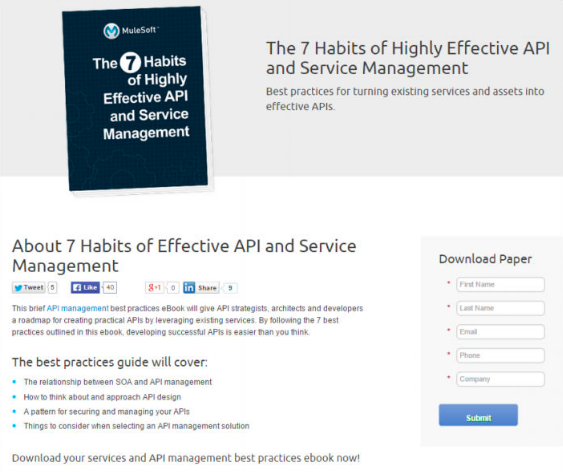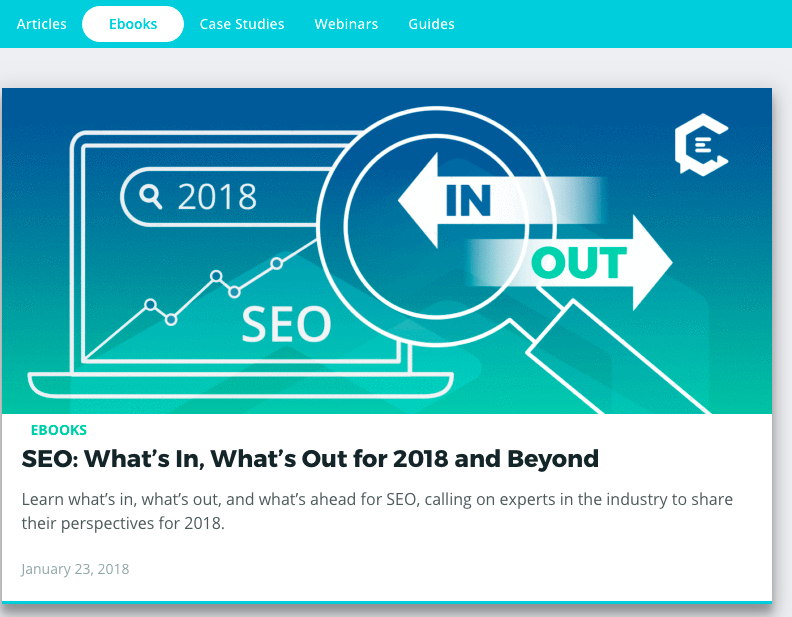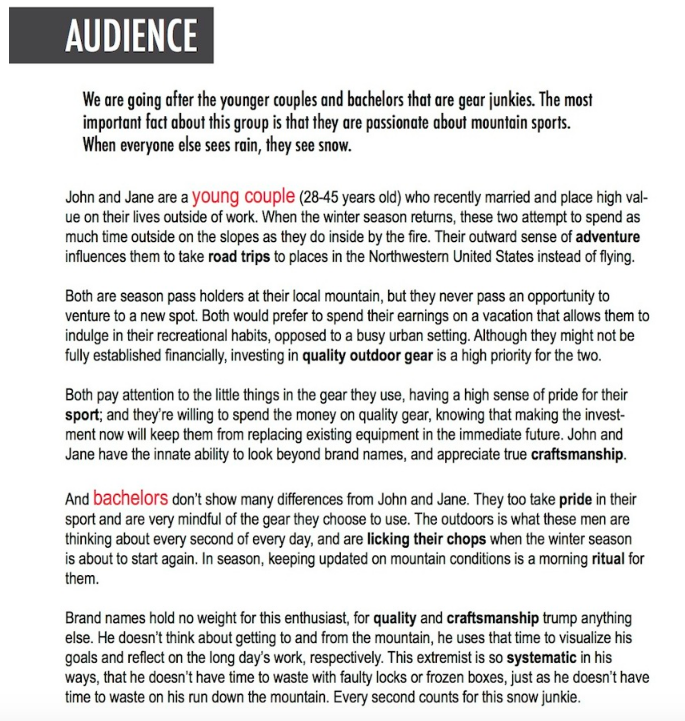Your brand content marketing team is a well-oiled machine… You think. But you’ve never mastered anything longer than a 500-word blog post. What happens if you want to capitalize on the value of longer-form content, like an ebook, white paper, case study, or major content asset?
Luckily, your success is all hinged on one thing: mastering a creative brief. That’s right. A creative brief is not only an outline for your writing project, it shapes and directs the creative work to help resonate with the right audience and make them actually care about your brand.
Most brand marketers underestimate their power, whether using them in-house or when hiring eBook writers. With that being said, how can you make sure you maximize the potential of building a brief for your first long-form content project? You need to answer the five Ws: Who? What? Where? When? Why? But most importantly: the who and why.
Here are the juicy details…
Master the 5 Ws of a creative brief
What: Details of the assignment
What do you want the writer to do? This part of the brief should tackle the details of the assignment, like:
- Type of long-form content you want to be produced: ebook, case study, blog post, etc.
- Word count: Give the writer a minimum and maximum word count. At a minimum, long-form content should be 1,200 words.
- Byline usage: Will the writer’s byline be used? (Typically with long-form content and guides, it is not.)
- Summary: What is the main premise of the content?
- Additional requests, preferences, and other editorial details: This area can have some meat. Your outline should provide the writer with exactly which points to cover, including any SEO keywords you want to be included (if it’s a search engine indexable page). Include formatting specifics, like sections, points to cover within each section, supporting information, and any other juicy details to make sure your major content asset is on point.
Here is an example from a (fictitious) travel company:
Type: eBook
Word Count: 2,000 – 2,500 words
Byline Usage: None
Summary: Theme – “How to Choose The Perfect Riverboat Vacation”
Write an ebook on how to choose a riverboat cruise. This resource should serve as a go-to guide for senior travelers as they are in the information-gathering phase of choosing their next vacation within retirement.
The sections should include:
- What is a riverboat cruise? (with examples)
- Where can you go? (include map)
- Why go on a riverboat vacation over other types of trips?
- When is the best time to take a riverboat cruise?
Additional Requests:
- Content should include the primary keyword (written three to five times): “riverboat cruise”
- The secondary keywords (written 1-2 times each) should include: “riverboat vacation”, “senior travel”, “travel destination”
- Please include natural links to other articles on our domain at least five times throughout the ebook.
- Please write in an approachable yet informed voice.
When: Due dates
Specify to the writer when you want the content by (due date). You should also include a publish date, too. Make sure you pad in time to edit the piece. With long-form content, it could take multiple rounds of revisions to get the content publish-ready.
Where: Content destination
Where will the long-form content live? Specify this. Sharing where on your website the piece of content will be published allows the writer to understand the tone and feel of the proposed content asset. If a site visitor is further down the funnel (i.e., closer to making a purchase decision or goal-action), you may want to add more descriptive text in your lead-in copy to the content asset.
Also, specify if you want your long-form content to be gated or non-gated.
Gated = Users have to fork over some personal information so you can:
- Put them into your sales funnel.
- Understand who it is that is reading your guide.
- Opt people into your emails.
- Do all of the above.
Example of gated long-form content:
(Digital Marketing Glossary)
Non-gated = Users can click around without giving you any information.
If you opt for gated content, make sure you consider the following as you write your brief:
- Do you want to collect customer leads?
- What type of information do you want to obtain?
- Where on the website do you want the long-form content call to action to download to appear?
Example of non-gated ebook content:
(Source)
Who: Your target audience
Understanding the target audience for your long-form content helps whoever you dispatch the article to — in-house or freelance — create personalized and compelling content.
The tone, style, and words used in a piece of long-form content aimed at the C-suite are much different than a stay-at-home mom, for example.
When defining the target audience, create a robust persona that includes the following characteristics:
- Age
- Gender
- Interests
- Professional title
- Reading level
- Goals
- Challenges
(This post explains how to build a creative and targeted persona.)
As ClearVoice Co-founder Joe Griffin explained in a Convince & Convert post, the following questions should be answered in the target audience section of a creative brief:
- Who is the persona?
- What motivates them?
- Why are they the target audience?
- What are their primary interests?
- What do they need? What alternative products do they use?
- Where do they get information, product reviews, news, and entertainment?
- What else is relevant? Political views, sense of humor, favorite types of movies? These things may influence your final product.
Pro tip: Stay as detailed as possible so the writer can tailor the long-form content precisely to the right audience. Writing a clear creative brief with audience details will help them be able to craft copy that speaks to the audience’s pain points and challenges.
Here’s an example from Cargo Collective, an outdoor retailer:
(Source)
Why: Your purpose
It takes hours, weeks, and sometimes even months to perfect an ebook or long-form content asset. To this point, you must take the time to consider the true purpose of it. Why are you investing in time and resources to create a remarkable piece to begin with? What do you want to achieve? Answering the why is the single most important part of the creative brief.
The why is all about defining the purpose and goal of your marquee content. There are numerous goals you could meet by producing this type of content.
Before you have your writers put pen to paper, think about the big picture. Writer Emma Siemasko remarks on Crazy Egg:
Do you want to spread the word about your brand, gain more customers, participate in industry conversation, or get more leads? Ask yourself the following:
-
Why am I even writing this?
-
Who is this for?
-
What would I define as a success? How will I measure it?
In the brief, make sure you specify how you want the reader to act. Specify the desired call-to-action within the brief so the writer has clarity on how they should end the piece of content — and lead up to it.
Remember, most readers need to be educated before converting into a customer, or taking the next step down the customer lifecycle. Make sure you set a clear expectation that you want the content to educate, not sell. Your content asset shouldn’t be a giant, flashing advertisement for your brand. It should inform your readers about a particular subject related to your brand.
An example from a tech/security firm, IT PI (fictitious), writing a guide to GDPR compliance in the U.S.:
Problem we’re trying to help solve: Many marketers struggle with trying to grasp the requirements of GDPR. This content asset will serve as an accessible and comprehensible guide to its impact on a U.S. business. It will help brands (who are pressed for time before the GDPR deadline) understand:
- What the rules are
- How they impacts them and
- How to get in to compliance with the laws.
We want to remove friction who have brands who have concerns with website security, cookie tracking, and other issues surrounding security compliance.
Overview: The content will flow in a logical order, from thought to action. Start by explaining GDPR in layman’s terms, then how it impacts business. Then lead to action by delivering takeaways that they can put into practice immediately. Share specific examples and screenshots. Think of each section as a lesson plan, following a logical sequence so readers want to continue to learn more.
End goal of the content: To convince U.S. brands that they need to comply with GDPR, and with the help of experts in tech/security, the task will be easier. The call-to-action should encourage the demand for hiring an external IT department, including a outsourced Chief Security Officer, plus various other website enhancements that can be done by IT PI.
In closing
A long-form content creative brief should never be an afterthought. It should reflect your goals as a brand as you embark on the journey of creating a major content asset. It serves as your guidepost to creating a piece of content that can rain in the leads and position your business for growth.












